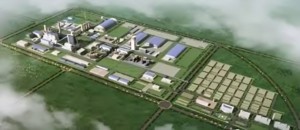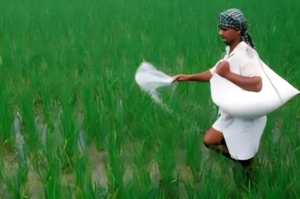China’s Fertiliser Export Curbs and Their Impact on India’s Agriculture Supply Chain
India’s farmers have long relied on affordable fertilisers to maintain crop yields and ensure food security. However, recent export restrictions imposed by China on several key fertiliser components have disrupted the delicate balance of supply and demand. In this article, we explore the causes behind China’s policy shift, examine its ripple effects across India’s agricultural sector, and discuss how stakeholders—from policymakers to end‑consumers—can navigate this evolving landscape.
Introduction
The world’s largest fertiliser producer, China, recently announced restrictions on the export of phosphate and potash-based products. This move, aimed at securing domestic supplies and responding to environmental concerns, has left India scrambling for alternative sources. As the spring sowing season approaches, farmers face uncertainty over input costs, while policymakers work to shore up reserves. Understanding the dynamics of this development is critical for everyone involved—farmers, distributors, agronomists, and consumers.

China fertiliser export curbs India impact
Supply Chain Disruption: What Changed?
China’s fertiliser industry accounts for over 30% of global phosphate production. In early June 2025, Beijing announced tighter export licensing, citing the need to preserve finite mineral reserves and curb pollution from processing plants. Key changes include:
- Quota limitations: Exportable volume of diammonium phosphate (DAP) and monoammonium phosphate (MAP) capped at 60% of previous year’s levels.
- Stricter environmental audits: Facilities must meet enhanced effluent‑treatment standards before receiving export permits.
- Tiered licensing fees: Export licenses for premium-grade potash now cost up to 50% more, translating into higher landed costs for importers.
These measures, while justified by China’s domestic priorities, have tightened the global fertiliser market and driven up international prices.
Impact on Indian Agriculture
India imports roughly 35% of its phosphate requirements, with China supplying nearly half of that. The new curbs have led to:
- Price Inflation for Farmers
- Wholesale DAP prices in India surged by 12% within two weeks.
- Smaller cooperatives in Punjab and Uttar Pradesh reported stock shortages, forcing farmers to delay application schedules.
- Supply Diversification Efforts
- Government-to-government talks with Morocco and Russia have accelerated, as both nations hold large phosphate reserves.
- Private-sector importers exploring spot purchases from North African suppliers, despite logistics challenges and higher freight costs.
- Subsidy and Regulatory Response
- The Ministry of Chemicals and Fertilisers announced an interim buffer stock release, aiming to stabilize retail prices.
- Proposal under review to increase subsidy ceiling for potash to shield smallholders from rising costs.
Real‑Life Farm Case Study
Meet Sunita Devi, a wheat farmer in Haryana. In previous years, she purchased subsidised DAP at ₹1,000 per 50‑kg bag. After China’s export curbs:
- Cost spike: Her local supplier quoted ₹1,200 per bag—20% higher.
- Yield risk: Reduced fertiliser application—she cut usage by 10% to stay within budget, risking a potential 5% yield drop.
- Adaptive measures: Sunita joined a regional cooperative bulk‑buy program, securing DAP at ₹1,100 per bag and accessing expert guidance on balanced nutrient management.
Her experience underscores the importance of collective action and timely policy support.
Strategies for Mitigation
Agricultural stakeholders can adopt multiple strategies to cushion the impact:
- Blended fertiliser formulations: Encouraging customised NPK blends that optimise nutrient use and reduce dependency on single-source imports.
- Organic and bio‑fertilisers: Scaling up production of vermicompost and microbial inoculants to complement chemical inputs.
- Precision farming: Leveraging soil testing and GPS‑guided application systems to minimise wastage and enhance nutrient uptake.
- Strengthening storage infrastructure: Expanding warehouse capacity to build strategic buffer stocks during periods of lower global prices.
Policy Recommendations
To ensure long‑term resilience, policymakers should consider:
- Negotiating long‑term contracts: Securing fixed‑price agreements with alternative suppliers to mitigate volatility.
- Investing in domestic mining: Exploring phosphate reserves in Odisha and Rajasthan to reduce import dependence.
- Research and development: Funding innovation in waste‑derived fertilisers, such as phosphate recovery from wastewater.
- Regulatory agility: Implementing a dynamic subsidy model that responds to global price movements in near real time.
Conclusion
China’s export curbs on fertiliser have sent shockwaves through India’s agricultural ecosystem, highlighting vulnerabilities in supply chains that millions of farmers depend upon. Yet, with proactive strategies—ranging from diversification of suppliers to adoption of precision agriculture—India can navigate these challenges and emerge more self‑reliant. Collaboration between government bodies, private enterprises, and farmer cooperatives will be key to ensuring that the fields continue to flourish, no matter how the global landscape shifts.
